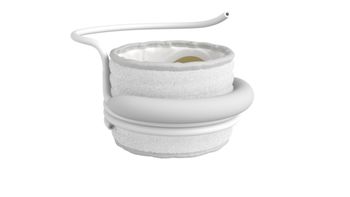
Older Americans slow to use online health services, but that could change
Poll examines patient reaction to online, direct-to-consumer medicine.
Older Americans have been slow to join the trend of using
Just 7.5% of patients aged 50 to 80 years have used at least one online-only provider for a health care service, according to the
Among people aged 65 years and older, 47% said they had never heard of such companies. But among those aged 50 to 64 years, 42% said they would be interested in using direct-to-consumer medicine in the future, according to the poll results.
“These compelling findings have important implications for patient safety and continuity of care,” Mark Fendrick, MD, a primary care physician at Michigan Medicine, said in a news release. “With rapid growth in this sector of health care predicted for this year and beyond, all providers, insurers and regulators need to pay more attention to how patients are using these services and why, and the impact on care quality and safety.”
Fendrick is director of UM’s Center for Value-Based Insurance Design, a member of IHPI member professor of internal medicine in the Division of General Medicine at the U-M Medical School.
The results hint at consumer feelings that could warrant additional research, said Nicole Hadeed, MD, a clinical assistant professor who also worked on the poll.
Users and uses
Almost half of those using direct-to-consumer services said it was for general health care such as treatment for allergies, sinus infections, pink eye or acid reflux.
Among those using direct-to-consumer medical services:
- 62% received a prescription.
- 55% cited convenience of use.
- 36% said their main health care provider did not know they used the service.
- 36% of those who received a prescription said their regular provider does not know about the prescription.
- 12% used the service for mental health reasons.
- 15% sought help for a sexual health issue.
- 9% used it for skin care.
- 6% used it for weight management.
- 5% used it for hair loss.
Talk to your doctor
Direct-to-consumer medical providers often market themselves as an alternative for patients nervous about discussing sensitive health information with doctors. But only 10% of poll respondents said that was a reason for them. Approximately 20% said they turned to direct-to-consumer medicine because of lack of access to their regular health care provider, not having a regular provider, or needing a service when a regular provider was not available or open, according to the poll results.
Pandemic effects
In September 2020, Fendrick and Hadeed discussed “the near-overnight implementation of virtual care,” patient demands for care, and continuity of care, in an article in
In the more recent poll, 58% of patients who used a direct-to-consumer service started using them in 2020, 2021, or 2022.
Future prediction
Fendrick acknowledged the convenience of online services, and patients likely will use them more as additional vendors get into business as the nation faces a shortage of primary care physicians. He cited “the recent launch of a telemedicine platform offering home delivery for the new highly popular weight loss drugs” as an example. It was an apparent allusion to Eli Lilly and Company’s
However they get the drugs, patients should tell their physicians about them.
“Given a likely expansion of online care, it is critical that individuals inform their usual clinician and that we providers consistently ask our patients regarding their use,” Fendrick said in the news release. “Similar to my routinely asking patients about which supplements, vitamins and over-the-counter medications they’re taking, it should become standard practice for me to inquire about prescriptions or diagnoses they’ve received online, as it might influence their care.”
The poll was conducted by NORC at the University of Chicago via telephone and online in July and August 2023, with 2,657 adults aged 50 to 80 years. The National Poll on Healthy Aging is based at the UM IHPI and supported by AARP and Michigan Medicine, the academic medical center of UM.
Newsletter
Stay informed and empowered with Medical Economics enewsletter, delivering expert insights, financial strategies, practice management tips and technology trends — tailored for today’s physicians.








